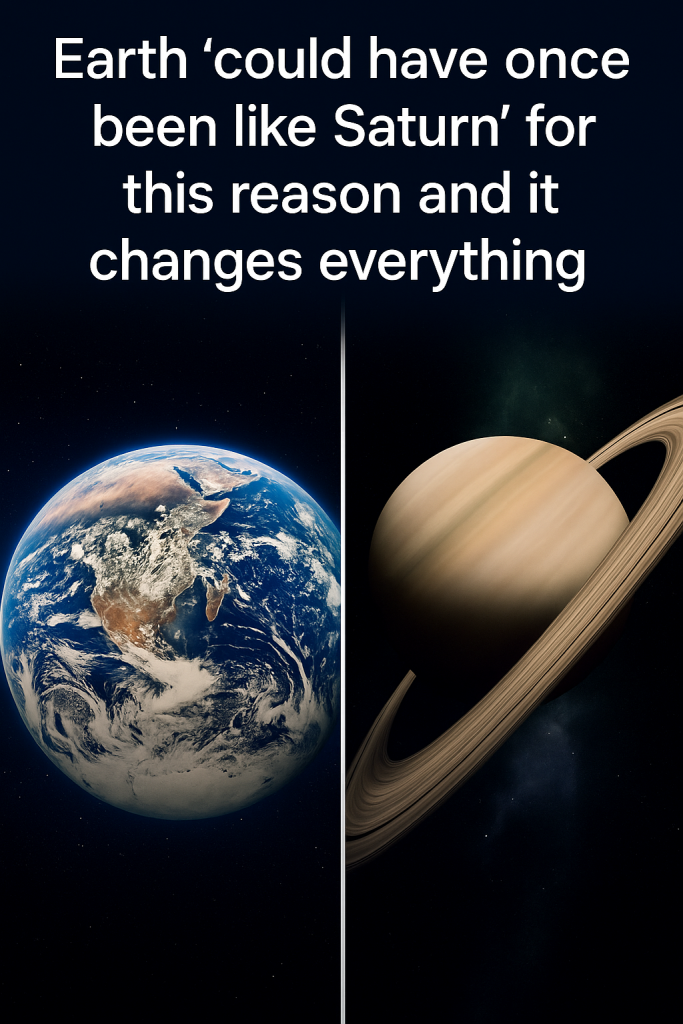In a groundbreaking new study, scientists propose that Earth might not always have been the solitary blue orb we know today. Instead, evidence suggests that our planet was once encircled by mighty planetary rings, much like the iconic rings of Saturn. This revelation could transform our understanding of Earth’s early environment and the dynamics of planetary formation.
For decades, Saturn’s dazzling rings have been seen as a unique hallmark within our solar system. However, recent astrophysical research indicates that ring systems may be more common and transient phenomena in planetary evolution than previously thought. According to the latest 2024 findings, Earth may have hosted its own ring system shortly after its formation, reshaping everything we thought about our planet’s early years.
The origins of Earth’s past rings lie in the chaotic aftermath of the solar system’s early days. Researchers hypothesize that a colossal impact event—the kind believed to have created the Moon—could have spewed massive debris into orbit around the Earth. This debris, unable to escape Earth’s gravity or immediately coalesce into larger bodies, may have formed a circumplanetary ring system composed of rock and dust particles.
One leading explanation links to the giant impact hypothesis, which posits that a Mars-sized body collided with the proto-Earth around 4.5 billion years ago. While much of the resulting matter eventually aggregated to form the Moon, some could have lingered in orbit as a ring system, resembling Saturn’s iconic concentric bands but composed primarily of rocky material rather than ice.
Recent simulations and modeling efforts conducted by planetary scientists strengthen this theory. The dynamic behavior of debris in Earth orbit—affected by gravitational forces, solar radiation, and tidal interactions—could have allowed such rings to persist for a few million years before the particles either fell back to Earth or coalesced into satellites.
Why does this matter? This discovery fundamentally alters how scientists view Earth’s early atmosphere and environmental conditions. Rings could have influenced climate by reflecting sunlight, potentially affecting surface temperatures and the conditions under which life first emerged. Moreover, the presence of rings entails a more complex gravitational environment for early Earth, impacting tidal patterns and geological processes.
Furthermore, understanding that Earth once possessed rings broadens our perspective on planetary evolution across the cosmos. If ring systems can emerge temporarily around rocky planets, it suggests a new stage in planetary development that may be common but fleeting—opening up avenues to explore ring phenomena beyond the gas giants.
Looking ahead, researchers aim to identify clues of Earth’s ancient rings through geological records and lunar samples. While direct physical evidence remains elusive given the immense timescale, experimentations on particle behavior and observation of other ringed exoplanets can provide comparative insights.
In the end, this revelation invites us to reimagine our home planet not as a static entity but as one that underwent tumultuous changes, at times glowing under the shadow of its own ephemeral celestial adornments. Earth, temporarily draped in rings, may have resembled Saturn in ways we are only now beginning to uncover—a testament to the ever-evolving story of our solar neighborhood.



